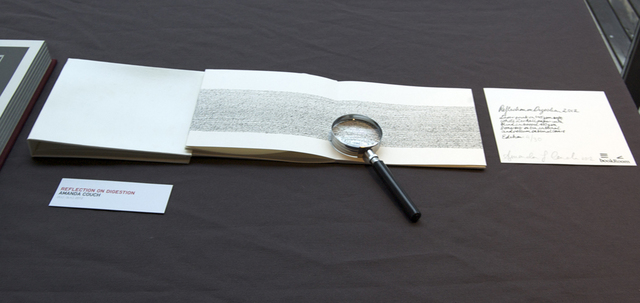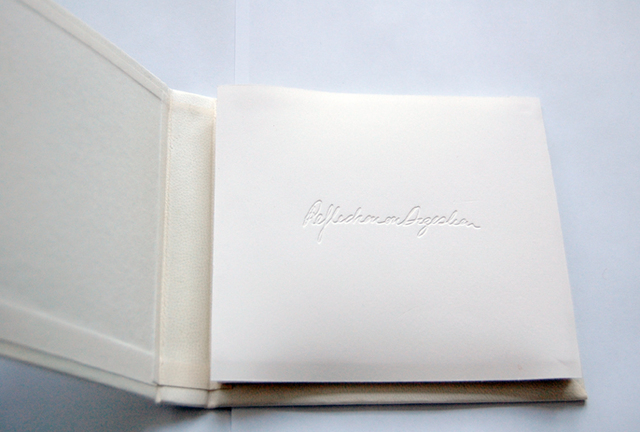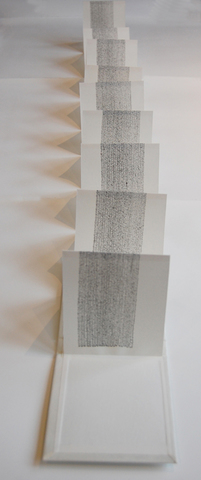This smaller version of Reflection on Digestion, stemming from the nine metre edition, this version too, is awkward. In the same concertina form, a third the length of its sister, its eighteen pages hold a miniaturised text. The language is only legible with the aid of a magnifying glass, and even then the script is hard to read, hovering between word and image, content and form.
The original scribed text stems from a body of knowledge encountered whilst on a post-graduate course in education. Writing, knowledge and the body are explored, and the metaphors of reflection and digestion consider process, processing, and ways of knowing and becoming. ‘Digestion’ stems from the word ‘digest’, which can both refer to an arrangement of written work; and to the processing or making sense of knowledge and experience, as well as to break down and absorb food.
Reflection on Digestion's concertina configuration makes reference to the image of the digestive system and connotes the meaning of the words 'reflection' and 'reflexive' coming from the sense of a physical and metaphorical bending or turning back paralleling the visual image of the gastrointestinal tract of twists and turns crammed into the body’s cavity.
Alimentary undulations are further mirrored in the loops and garlands of the handwriting itself which is a joined up text, each word tied to the previous, the next, and to the subsequent line, so that it is a kind of Boustrophedon, a continuous line running from left to right and right to left from the beginning of the book to the end. This continuous script refers to Latin texts from the early Christian era, when there were no spaces between words in a manuscript.
Produced with bookRoom press at University for the Creative Arts.





